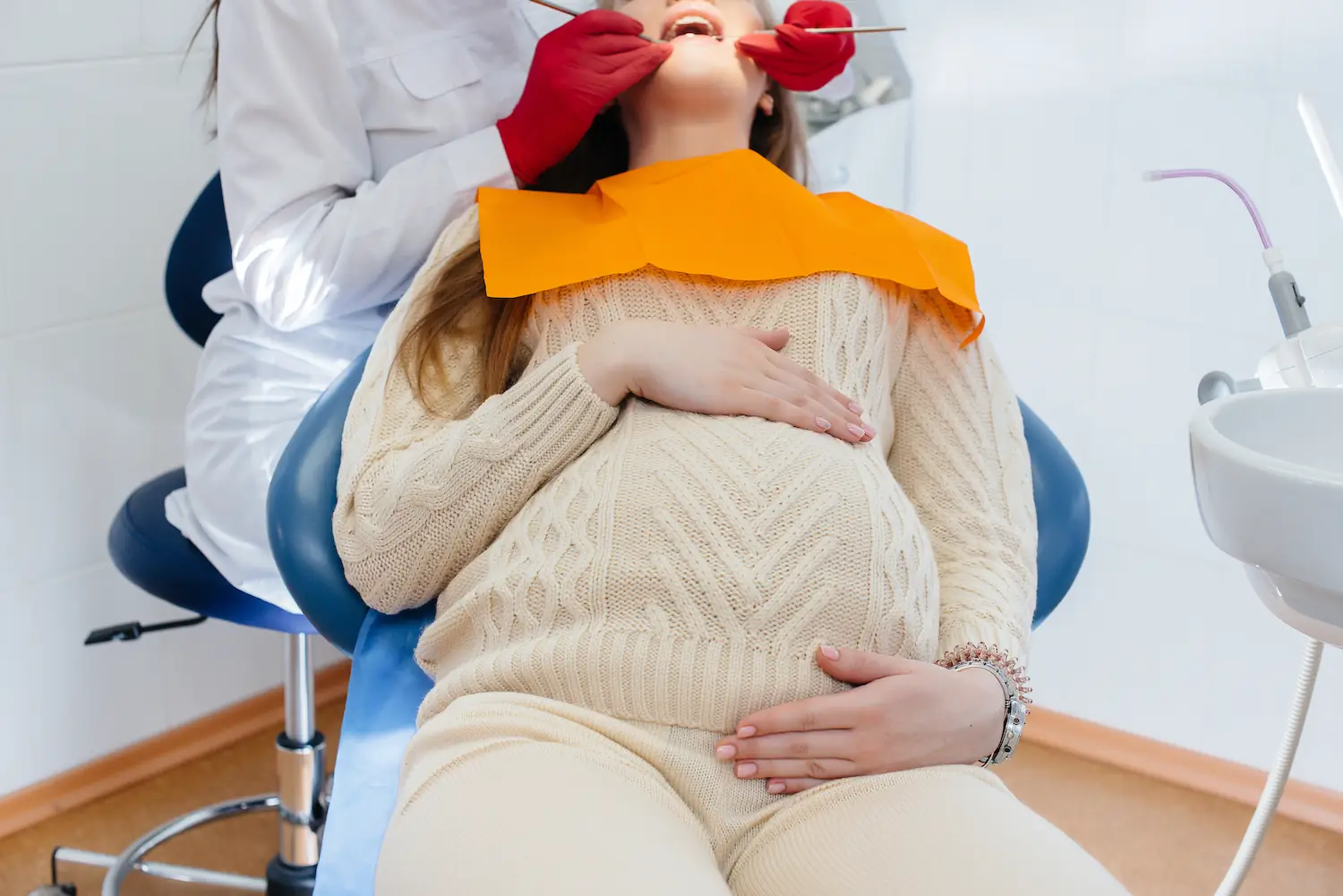Pregnancy-Safe Dental Care in Downtown Toronto
By Dr. Lok on 12/7/2024

Those two pink lines on your pregnancy test mark the beginning of countless changes - including how you approach dental care. Pregnancy transforms not just bodies but dental health as well.
The First Trimester: Morning Sickness and Dental Health
It’s 7 AM, and you’re making another dash to the bathroom. Morning sickness creates unique challenges for dental health. The acidic environment from frequent vomiting affects your tooth enamel, but reaching for your toothbrush immediately isn’t the answer.
Brushing right after vomiting causes more harm than good. A simple mixture of baking soda and water acts as a neutralizing shield for your teeth, countering stomach acids without causing additional wear. Keep a pre-mixed bottle of this solution at home, work, and in your car – an essential preparation for unexpected waves of nausea.
The Second Trimester: Peak Time for Dental Care
As first-trimester nausea subsides, you enter the optimal period for dental care. Your body has adjusted to its new state, but you’re not yet navigating the physical constraints of a full-term pregnancy.
However, elevated hormone levels continue affecting your oral health, potentially causing pregnancy gingivitis – a condition that inflames gums even with gentle brushing. Small growths called pregnancy tumors may appear on your gums. Despite their concerning name, these growths are benign and typically disappear postpartum, similar to those peculiar cravings for pickles and ice cream.
The Third Trimester: Adapting to Changes
Your growing baby bump presents new challenges in the dental chair. These final months might bring slightly looser teeth – a temporary condition caused by pregnancy hormones affecting the ligaments anchoring your teeth. Your body increases flexibility in preparation for childbirth, sometimes extending this effect to unexpected areas.
The Deeper Connection Between Oral Health and Pregnancy
Current research reveals significant links between maternal oral health and pregnancy outcomes. Maintaining healthy gums during pregnancy extends beyond preventing bleeding while brushing – it creates an optimal environment for fetal development.
Practical Steps for Optimal Dental Health
A pregnancy-safe dental care routine requires minimal adjustments. Essential tools include:
- A soft-bristled electronic toothbrush.
- A salt-based natural toothpaste.
- A gentle flossing technique.
- This basic care benefits both mother and baby.
- For managing sweet cravings, timing matters. Enjoying treats with meals rather than as separate snacks reduces acid exposure to teeth.
Your dental team functions as an integral part of your prenatal care. Each pregnancy brings unique dental challenges, from early morning sickness to late-term gum sensitivity. Professional guidance helps navigate these changes while maintaining oral health.
Pregnancy is a time of incredible changes that profoundly affect oral health more than you might imagine in your overall well-being. By staying informed and proactive about your oral health care, you’re not just maintaining your smile – you’re contributing to a healthy start for your little one. And isn’t that worth something to smile about?
Book your next check-up today - your future self will thank you for prioritizing oral health.